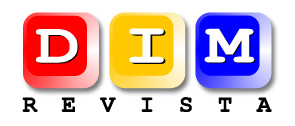La cara B de la resolucion de problemas matemáticos se soluciona con el aprendizaje autorregulado
RESUMEN
En el siguiente trabajo, se encuentra una reflexión basada en la experiencia docente en la enseñanza de las matemáticas en las etapas obligatorias en España y un amplio estudio bibliográfico que trata de remarcar la importancia de la implantación real y efectiva del aprendizaje autorregulado focalizándolo en la teoría de la situaciones de Brousseau y el uso cotidiano de heurísticos para la resolución de problemas matemáticos (Polya, 1945).
Si bien es cierto, tanto los trabajos de Polya como de Brousseau son conocidos, el aprendizaje autorregulado supone un constructo novedoso donde se contemplan variables cognitivas, metacognitivas, motivacionales, contextuales y comportamentales que ayudan a desarrollar todo el potencial del alumno en cualquier asignatura y etapa educativa (García, 2014).
Los estudiantes que comprenden lo que han de hacer en la resolución de problemas matemáticos aplicando heurísticos o implicándose de manera activa en el proceso de enseñanza-aprendizaje (contrato didáctico) con patrones autorreguladores son más activos, eficientes y con un nivel motivacional superior al resto de alumnos de su entorno
PALABRAS CLAVE: Aprendizaje autorregulado, constructo, heurístico, binomio, retos
AUTORES

Oscar Garcia Gaitero <oscar.garcia@unir.net>
Doctor en psicología de la Educación (UCM). Profesor del máster de neuropsicología y educación. (Unir)
Franciso Javier Naranjo Castellano <fjaviernc@hotmail.com>
Universidad Complutense de Madrid
REFERENCIA BIBLIOGRÁFICA
GARCÍA GAITERO, Óscar; NARANJO CASTELLANO, Francisco Javier (2016). La cara B de la resolucion de problemas matemáticos se soluciona con el aprendizaje autorregulado. En Revista Didáctica, Innovación y Multimedia, núm. 33 <http://dimglobal.net/revista33.htm>
The flip side of solving mathematical problems is solved with self-regulated learning
ABSTRACT
The following work is a reflection on the mathematics teaching experience in the mandatory education stages in Spain and an extensive bibliographical study that attempts to underscore the importance of the actual and effective implementation of self-regulated learning based on Brousseau's didactical situation theories and the daily use of heuristics in mathematical problem solving (Polya, 1945).
While it is true that both Polya and Brousseau are well known, self-regulated learning is a new construct where cognitive, metacognitive, motivational, contextual and behavioural variables are considered in order to help develop the full potential of the student in any subject and educational stage (García, 2014).
Students who fully understand what they need to do in mathematical problem solving by applying heuristics or participating actively in the teaching-learning process (didactic agreement) with self-regulatory patterns are more active and efficient and possess a greater motivational level than the rest of the students.
KEYWORDS: Self-regulated learning, construct, heuristics, binomial, challenges.



 SUPLEMENTO:
SUPLEMENTO: 



